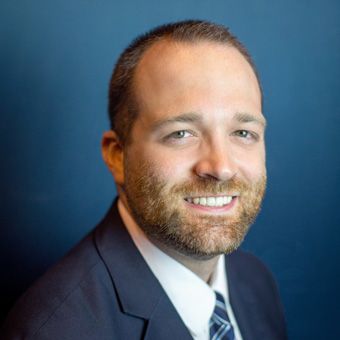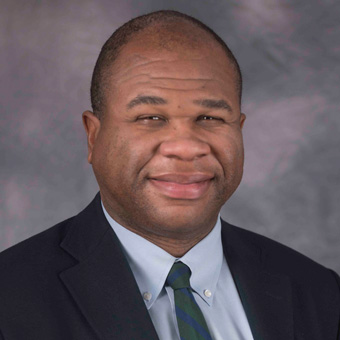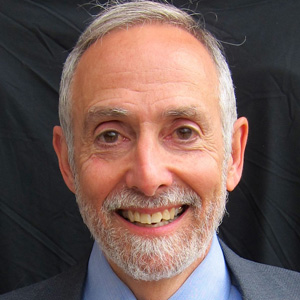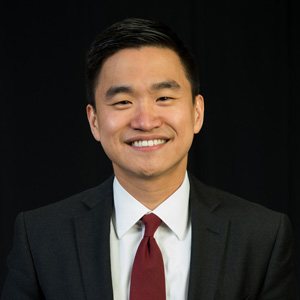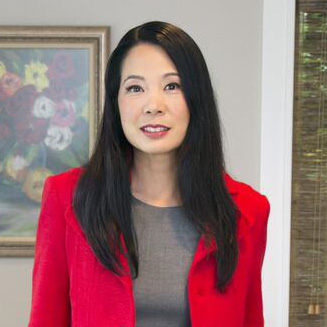TRACK 1: Speechwriting Fundamentals: For those new to the craft or needing a refresher
Thursday, March 8
Welcome remarks
What they learned in the White House: A conversation with the chief speechwriters for President Barack Obama and First Lady Michelle Obama
Cody Keenan, director of speechwriting for President Barack Obama, and Sarah Hurwitz, former chief speechwriter for first lady Michelle Obama, will give you a behind-the-scenes look at what it was like to write speeches for this historic couple. Citing real-life examples from their time in the White House, Keenan and Hurwitz will offer advice on how to tell memorable stories, make persuasive arguments and capture the imagination of any audience.
During this keynote you will learn how to:
- Move your audience with powerful stories
- Establish an authentic connection between your speaker and the audience
- Employ vivid language that will motivate people to take action
- Perform under pressure in times of crises
- Write for a variety of difference audiences
“Hey, you’re the new speechwriter?” Adapting your skills to the speechwriting profession
If you ask speechwriters how they got their start in the profession, chances are they’ll say, “I fell into it,” or “by accident.” The truth is, most speechwriters don’t start out writing speeches—they were recognized for key skills and asked to step in when the need arose. Find out how you can use the skills you already possess as key building blocks of a new, successful speechwriting career.
You’ll learn how to:
- Identify the skills that are most valuable to the fledgling speechwriter
- Draw on famous writers and orators to create a classic feel for a modern speech
- Establish yourself as an authority in your organization and build trust with your principal
- Capture your principal’s voice and build a keynote address around a few guiding themes
- Gain access to your principal while building relationships that increase chances for success
Writing for the ear vs. writing for the page: Distinguish your speeches and harness the power of the spoken word
Speeches and the written word are both powerful ways to connect with your audience—but a speech must be more than merely a letter read aloud. Audiences can’t go back and reread your speech. The first time they hear it will likely be the only time. Listeners often walk away from a speech not necessarily remembering what you said, but how your words made them feel. In this session, you’ll learn how to use the power of the spoken word to tap into those feelings, how to grab and hold your listeners’ attention and how to ensure they follow your arguments and root for you to deliver a masterful performance.
You will learn how to:
- Simplify your sentences to make them shorter, clearer, active and more memorable
- Trim the fat in your paragraphs and your arguments to make them easier to follow
- Leave a trail of “breadcrumbs” as you go so your listeners don’t get lost
- Inject powerful personal narratives to get your audience emotionally invested in your words–even if your principal is reluctant to get personal
Lunch
“She said what?” Mastering the art of the interview
The most often overlooked component of a great speech occurs before you make the first keystroke: The interview. The best interviews aren’t simply about asking the right questions, they’re about putting your subjects at ease and pulling the right narrative threads together to weave a compelling tale. A great speechwriter—like any great journalist—must start with a plan.
In this session, you’ll learn how to:
- Prepare and organize the conversation like a pro
- Ask the key questions to untangle complex subject matter
- Maximize your time with busy experts
- Draw out illuminating stories that connect with audiences
- Identify themes that tell the big story
Networking break
Surviving a leadership transition: Five ways to thrive when the world shifts
Adrianne Goldsmith Romero has worked for three FBI directors: Robert Mueller, James Comey and now Christopher Wray. She knows what it means to develop a process for speechwriting, editing and event preparation—and then have everything change when your world shifts and the slate is wiped clean. How do you hit the ground running? How do you learn a new leader’s speaking style, preferences and motivations? How do you build credibility with a new boss? How do you balance your institutional knowledge with new leadership priorities? How do you learn to work with a new team—one with its own agenda?
In this up-to-the minute session, you will learn how to:
- Get the skinny on your new speaker, even in the absence of one-on-one interaction
- Identify your leaders’ priorities and learn what makes them tick
- Draw on your institutional knowledge to help your leaders understand the big picture—the culture, the undercurrents and the issues they need to know
- Illustrate your value to become indispensable to a new team
- Think like a fox: Know when to quietly sit, listen and observe, and when to leap into action to get what you need
All the presidents’ men and women: 30 years of White House speechwriters
During the 30 years of this conference, attendees have heard from White House speechwriters dating back to President Ronald Reagan. In honor of that tradition, we have invited an all-star panel of presidential speechwriters spanning the past 30 years to share stories and insights about writing for the highest office.
Networking cocktail party located in the NEA Atrium
Friday, March 9
Breakfast and brainstorming: Tips on how to take the next step in your career
Hear from a panel of speechwriters and executive communicators who have successfully charted their path in different fields and can offer tips and advice on how to make your next career move.
Panelists:
From the ear to the eye: Transforming and repurposing your speeches into powerful pieces for paper
Many folks assume that speechwriters spend all their time crafting long, dramatic, formal addresses. The truth is that our jobs often require us to create a wide variety of written products that help advance the mission of our organizations. This presentation will provide attendees with practical, day-to-day strategies for transforming existing speeches into new and original pieces that still retain the core messaging of your work.
You will learn how to write:
- Editorials and opinion pieces that allow your boss to drive the conversation within your industry
- Press statements that deliver positive media coverage and raise your principal’s profile
- Academic articles and business materials that supply your stakeholders with everything they need to know about issues confronting your industry
- Letters, emails and other outreach that generate new customers and higher revenues
- Social media posts that help your organization expand its online footprint
Firebrand leaders: Amplify your inspiration quotient to unite and ignite
Now more than ever, the world needs exceptional leaders, but what separates a truly extraordinary leader from a merely ordinary executive? It’s leading with an “upstart” attitude: having the personal courage to be both vulnerable and mission driven. To be a thought leader who’s both a simplifier and dilemma flipper. To inspire followers about the world they’re building with your organization’s every product, service or campaign. Let’s talk about how we—as executive speechwriters, the builders of platforms and the wielders of words—can help shape better leaders, and how sharing a compelling vision and narrative can bring out the “upstart” in our leaders so they can lead our world to a better story.
You will walk away from this keynote with:
- The top 10 traits of an upstart leader, and ways your leaders can showcase those attributes onstage and on the page
- Proven communications techniques for your leader to connect quickly and powerfully with audiences
- Strategies to develop thought leadership to establish your leader’s unique position in the industry



